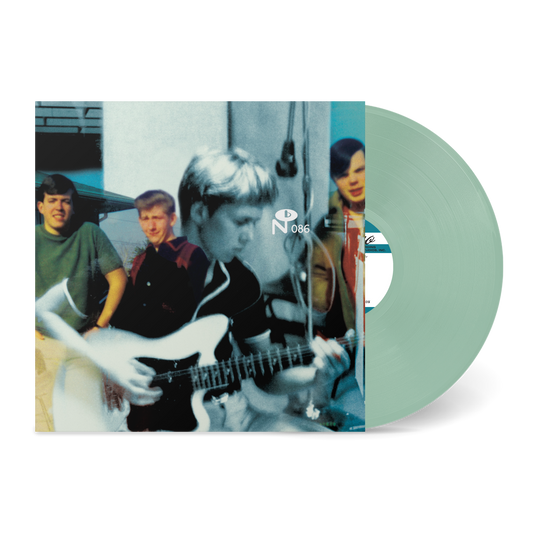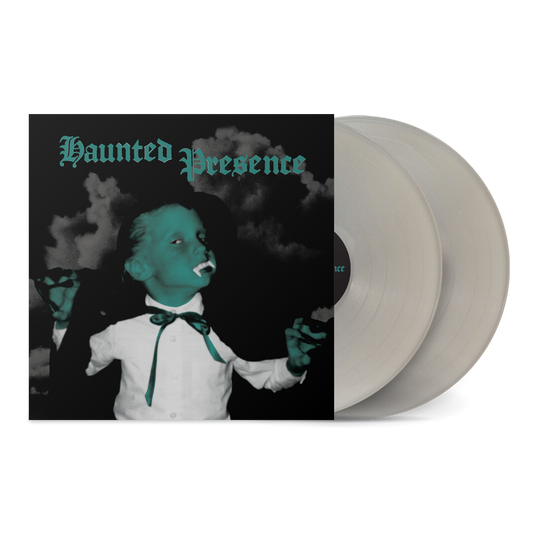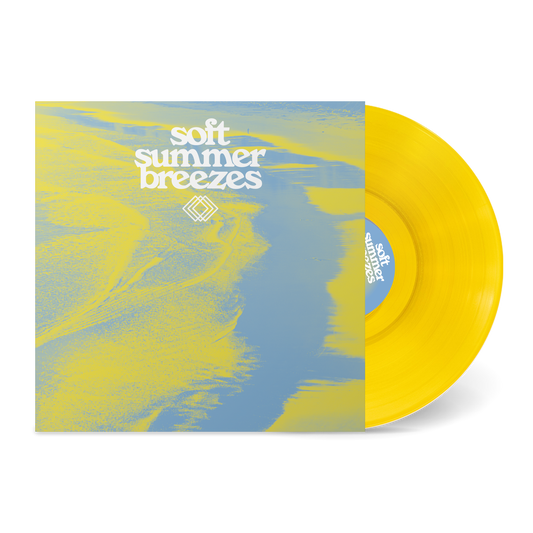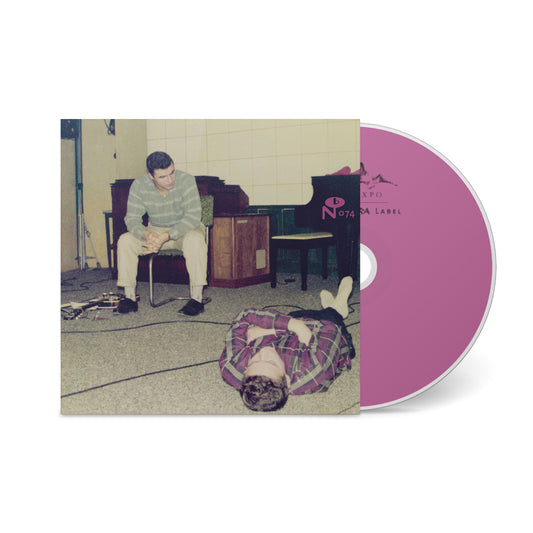The Mystic Tide story skirts the shoreline of a prototypical mid-60s grassroots rock’n’roll parable. It’s a modest tale, representing little more than a ripple across the lives of its participants, before they all moved on to become more productive members of society. Hailing from the suburban sprawl of New York’s Long Island, each member of the band fit the middle-class collegiate stereotype: white Levi jeans, penny loafers, side-parted haircuts. And there’s nothing particularly notable about the group’s formation, nor the manner by which it petered out. In fact, no available evidence hints at either scandal or intrigue during the band’s brief existence. But such is the manner in which some of the greatest rock’n’roll is created: the power of the amateur.
What does set the Mystic Tide story apart is the kind of noise that this otherwise unremarkable quartet made. The “Long Island sound”—principally the province of white musicians despite the heavy influence of R&B—was marked by swollen Hammond work, chugging rhythms, and full-throated, vein-popping vocalese. It emanated from area hotspots like Action House in Island Park, a club central to a scene ruled by acts like The Vagrants, The Hassles, The Pigeons, and Bit ’A Sweet, each of them in thrall to Atlantic Records’ hit-making blue-eyed paisanos The Young Rascals. The coarse-grained, at times almost brutal approach of The Mystic Tide openly clashed with these regional tastes, leaving them outliers with only a limited following, despite an undoubted resolve in what they were doing. It might be tempting to compare The Mystic Tide with the rock’n’roll existentialists of nearby Gotham, as “You Won’t Look Back” bears superficial resemblance to early Velvet Underground and the fretboard fireworks of “Frustration” mirror the more frenetic-splenetic moments on the first two VU long-players. But The Tide had neither the knowledge of the Soho boho set, nor their intellectual pretensions. Its members divined their sound from the standard influences of the day—surf rock, The Beatles, British R&B—and simply harnessed their untutored abilities to explicate a preternatural angst within their songs.

The heart of The Mystic Tide was Joe Dockow Jr. (the family's eastern European surname was Americanized to Docko), who grew up in tiny Woodbury, a leafy suburb two hours east of New York City. Though he was tutored on clarinet and saxophone in junior high school, Joe Jr.’s interest in the guitar was first sparked by the instrumental rock of The Ventures, and then sent into overdrive by the intrusion of The Beatles into teenage America’s collective psyche in 1964. Very much a bedroom musician at first, Joe Jr. taught himself on guitar and also began to compose, specializing in plaintive, if crude, surf and Brit-tinged numbers.
Joe’s father couldn’t help but notice his son’s enthusiasm, and he not only actively encouraged Joe Jr.’s activities, but intended to advance them. “Joe must have written over 50 songs before I did anything about it,” Docko Sr. said at the time. Following a process outlined in any typical How-To-Succeed-In-Music manual, he began copyrighting his son’s songs in March of 1965. He'd likely been prompted by Joe Jr., still a high schooler, linking up with college-age peers to form a combo called The Chosen Few, featuring Joe on lead guitar, Jim Thomas on rhythm guitar, Paul Picell on bass, and drummer John William. Around this time, Joe’s dad also bankrolled a visit to Ultra-Sonic Studios in nearby Hempstead, Long Island. The Chosen Few’s initial foray on magnetic tape was “I Wouldn’t Care,” a slice of adenoidal teen trash with the minor chord moves characteristic of America’s early response to the British Invasion. In other words, a charming curio, but hardly a harbinger of the ensemble’s future efforts.
After graduating high school, Docko attended Manhattan College in the Bronx alongside John William, and their studies meant the band remained a weekend affair at best. Their playlist was the expected mixture of British covers and popular chart material, sung mostly by Docko with vocal support from Thomas and Picell. Right from the start, the band fit Joe’s original songs into their live set, a move that further limited the band’s opportunities to play, in an era during which most semi-amateur bands were expected to perform like human jukeboxes.
The group had improved by October, 1965, when another recording session took place, this time at Audio Recording & Manufacturing Co. in Long Island’s Franklin Square. Both “Stay Away” and “Why” were framed by the standard East Coast Mersey-surf beat with basic block vocals, reminiscent in part of New England groups like The Shags, though they displayed a growing understanding of dynamics. “Why” in particular, with its Animals-inspired bass line, twisted guitar fills, and simple cross rhythms, was a strong item that suggested the musicians were coalescing nicely.

While acetates of this second session are credited to The Chosen Few, by year's end the band had become the more prosaic Mystic Tide, a name likely inspired by Them’s “Mystic Eyes,” a track with the kind of frenetic inner thrust that would have appealed to Docko and the group. Strangely enough, The Mystic Tide would nonchalantly record their own piece entitled “Mystic Eyes,” one quite at odds with the Van Morrison opus, constituting as it does a dreamy, if slightly unsettling, exercise in surf-noir, with some push and pull in an otherwise languid arrangement. Although copywritten a few months later, “I Search For A New Love” was likely cut at the same time: more crude Anglicism highlighted by a stinging vibrato lead.
In between recording sessions and studies, the Tide played whatever dates they could find on their hometurf, largely high school affairs or teen clubs, in addition to a few college dances in the greater New York area. By all accounts, it was an uphill battle, as Docko himself related in 1996:
"The local scene in Long Island [was] very Top 40. If you wanted to play local places, you had to [perform] a lot of terrible music, which we refused to do. At that time, we called it selling out. We did originals and stuff that we liked, and sort of bluesy stuff. That helped us in the long run, but in the short run back then, it sort of hurt us. We refused to sell out. We wanted to stick to a sound."
That sound was increasingly at cross purposes with the aforementioned soul-rock idiom that dominated the Long Island mindset. But Docko’s own influences were moving beyond the British and toward the originators of the blues that the British had emulated, in the second-hand fashion familiar to the generation of white musicians that came of age in the mid-1960s. As a student, he spent time in New York clubs and encountered older bands like The Magicians and Blues Magoos, and absorbed the work of the more progressive acts.
“All my blues influence came from the British guys playing black stuff, which I had never heard. The Blues Project was another group from the American side, and I loved the Paul Butterfield Blues Band, especially the album EAST-WEST. I did like that darker blues influence. There was great stuff happening at that time around the world, like in England and Texas and different spots. But in Long Island it was really sort of like a dead place as far as that coming in. Maybe in a way, that added to the darker sound of our music. The frustration of what we had to play against around here.”
There may have been little blues evident in Docko’s compositions at this stage, but the overall tenor was certainly darker. In the meantime, father was actively promoting son, blitzing every recording organization address he could glean from Billboard or Cashbox with lacquers of the Tide’s demos, boldly proclaiming that “Joe will make a fortune [for] the company that signs him up.” Lack of response eventually moved Docko Sr. to form his own outlet, issuing a pair of singles on the Esquire imprint, which paired “Stay Away” with “Why” in October 1966, and “Mystic Eyes” with “I Search For A New Love” a month or so later. One brief notice in the trades announced the releases but muddled Docko Sr. and Jr.s’ roles, though it managed to indicate that Dad, at least, considered three members of The Mystic Tide essentially sidemen to his son.
While these by-now year-old recordings understandably made few waves, the coming of 1967 would witness the apotheosis of The Mystic Tide in the recording studio, when they rented RCA’s New York facility for a three-song session in February. Almost in defiance of the professional surroundings, on all three cuts the group raged untutored at breakneck pace, each instrument at full tilt. An overpowering barrage that spills as much musical bile as the words of the agitated vocal chant, the incredible “Frustration” more than lives up to its title. Only slightly less anxious, “Running Through The Night” is propelled by riff and slashing chord alone, the drums barely present in the mix. The lyrical reference to “psychedelic sounds” fit its moment, although the track conveys not mind expansion but a delicious paranoid energy.

A more obvious concession to prevailing trends might be the unambiguous instrumental “Psychedelic Journey,” although in truth the piece resides in that delightful rock’n’roll demimonde circa 1967, in which neophyte garage band players tended to glean only surface aspects of the eastern or free jazz modes equated with psychedelia, to arrive at something totally unique. In a classic case-in-point of this short-lived phenomenon, Docko might have taken his lead from The Yardbirds, or the Paul Butterfield instrumental “East-West,” but the interpretation on “Journey” ended up every bit The Mystic Tide’s own. It commences innocently enough with spindly modal runs and rolling percussion but rapidly begins to veer off the rails. As the rhythmic thrust waxes and wanes upon each modulation, the guitars start to generate real heat; with a relentless one-note bass line, by track’s end the sonic hysteria has been ratcheted up to an insane level. Remarkably, Docko and William didn’t use feedback or fuzz pedals; most every noise was simply communicated by fingers on—or in—the strings, amped up so loud one can almost smell the vacuum tubes as they fry.
“I used a 1964 Jazzmaster, through a Fender Super Reverb. The rhythm guitar player used a Rickenbacker also through a Super Reverb, and the bass player used a Hofner solid body, through a Fender Bassman. There were no effects—just straight into the amp, and that was it. We turned it up louder, [so] it sounded much better in the studio. There were no overdubs or anything like that. Because we did a lot of improvising, just spur-of-the-moment stuff, [that’s] how the feel went—that’s when we sort of generated electricity, and we tried to capture that feeling. Every song we recorded was originally like five, ten minutes long. When we went in to the studio, they’d say, listen, you can’t make singles that long. You gotta cut it down. And the guy said, oh, your amp is distorting, the tracks are bleeding from one instrument to another. That was sort of a battle, getting the sound down."

In truth, the engineer probably helped save the recordings, as all three tracks teeter at the edge of overload. Still, any distortion is restricted to the guitars and not the final balance. Simple moves like patching the drums into the echo chamber toward the end of the instrumental were effective. Joe Docko Sr. quickly issued all three tunes on a pair of singles in March and April of 1967, this time using the Solid Sound imprint, with “Frustration” and “Running Through The Night” both backed by different halves of “Psychedelic Journey.” Strangely enough, each excerpt stands well on its own, with contrasting levels of intensity. Given the changing flavors of the hit parade, these two singles might’ve theoretically had more commercial potential—but the Long Island take on psychedelia would define itself in terms of the half-speed, Motown-on-Mogadon sound of the hugely successful Vanilla Fudge. Not long after this second batch of vinyl was pressed, Jim Thomas quit. The band was down to a three-piece, but the Tide did not become a bottom-heavy power trio in the image of an au courant Cream or Jimi Hendrix Experience, remaining resolutely instead at full treble.
Back at Ultra-Sonic, the final Mystic Tide recording session was held in June 1967, hewing very much to the band’s patented style. Played on electric 12-string, “You Won’t Look Back” had an appealing enough jerk beat. But despite its contemporaneous copyright date, the song sounded like it could have been written back in 1965. “Mystery Ship” was moodier, with slapback echo on the vocals and a listless air that builds towards the finale with the usual power. The only whiff of a blues influence filters in through the guitar break. Both sides made up the act’s swan song single in August and, once again, Joe’s father made sure there was a mention in Billboard. The band had continued to work whatever jobs they could find, which included residencies at parochial venues like the Stop Inn in Garden Park or the Glenside Inn in Glen Cove. They did at last make it to the famed Action House in early 1968, but by that point the Tide was most certainly on its way out.
"The sound was too ahead of its time. We came very close, many, many times, to having a major label hookup, but it sort of fell apart at the last minute. When things are not going so good, there’s a lot of internal friction. So we finally split up. We heard the sound coming from other parts of the country or the world or whatever, but right here it was just tough to get it going. "
With the demise of the group, Docko signed up with another outfit called Odyssey, which played a strict diet of covers for more adult clubs in Long Island. It would seem that the profligate composer, who had registered more than 20 compositions in just over two years, was now content to perform others’ material in the accepted fashion. His father, who had once opined that “music just flows out of this boy, and it is all he lives for,” now had nothing to promote. What happened to Joe’s compatriots is unknown, but it is pretty certain that they had abandoned a career in music in the same way their bandleader shortly would.
By all accounts, Joe Docko had disposed of the Mystic Tide master tapes and associated vinyl sometime in the late 1970s, before learning of the deep interest in his teenaged warbles. The Tide was anthologized first—and quite appropriately—on the 1979 bootleg Ear-Piercing Punk, a sly attempt by Bomp! label founder Greg Shaw to indoctrinate the new wave generation in the ways of the 60s garage band. Word then began to spread about this tantalizingly obscure outfit and the incredible discs they had left behind. Constantly harassed by record collectors for the few copies of Mystic Tide singles he might have left, Docko eventually assented to an official release of the band’s recordings in 1991. He was nonplussed, to say the least, in regard to The Mystic Tide’s reputation.
"At first, I was really shocked, or even thought someone was putting me on. For years, nothing much happened, and later to have everyone sort of like it—and [tell me] I had a cult following—was very surprising. The fact that it finally did find its audience is really, really surprising to me. The stuff we were playing and our sound actually would probably fit in very well today, like with alternative rock, that sort of stuff. Maybe that’s why we’re popular!"
So the late Joe Docko Jr. mused in 1996. Close to three decades later, his reasoning still resonates, while the records he made with The Mystic Tide remain as relevant as ever. Such is the power of the amateur.
-ALEC PALAO
El Cerrito, California
With thanks to Barry Wickham, Mark Taylor and Cindy Vorte. Joe Docko quotes courtesy of Richie Unterberger






































